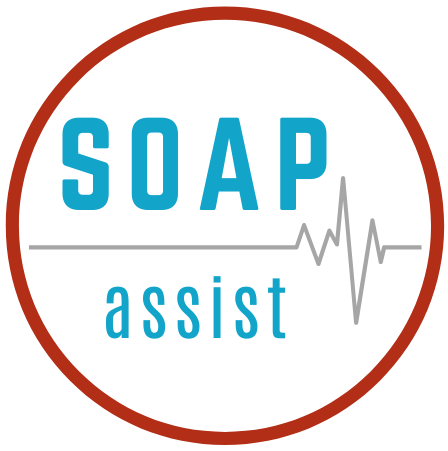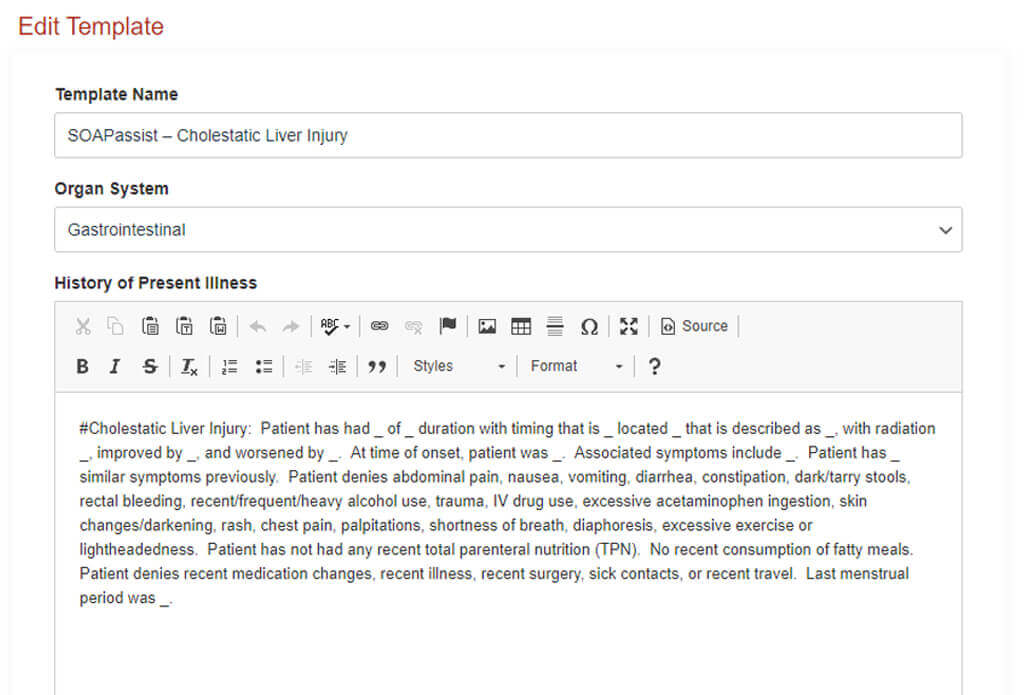Despite its name, aplastic anemia is defined as pancytopenia (not just anemia) in the setting of hypocellular bone marrow without the presence of an infiltrative process or an increase in reticulin. This diagnosis should always be considered when a pancytopenia is present without an obvious precipitant. While aplastic anemia has specific and straightforward diagnostic criteria, identifying the underlying cause is much more challenging. There are many possible causes and most cases of aplastic anemia are idiopathic (70-80%). Yet, identifying a precipitating cause can be a significant factor affecting the patient’s prognosis.
A strong first showing
With this in mind, we at SOAPassist have created a SOAP note template that streamlines your documentation. It also provides helpful prompts to avoid missing important testing and treatments. This template by no means captures every question, test and treatment that should be considered. However, it does provide a good starting point. Let’s talk about what went into making this template.
What caused this problem?
There are genetic and acquired causes of aplastic anemia. There is a premium on identifying the etiology of an acquired cause as reversing that cause is the primary treatment. The aplastic anemia template contains queues for the provider to help them identify a possible cause earlier. Such causes include toxins, infections and various medications. As the causes are many and varied, remembering all of them is unrealistic. Utilizing the aplastic anemia template provides reminders to ask about such things.
Easy to miss
Evaluating a patient for aplastic anemia requires a structured approach. A thorough physical examination specifically tailored to identify sources of bleeding or signs of anemia or thrombocytopenia is important. The assessment portion of the template reiterates the diagnostic criteria for the provider’s reference. It also serves as a reminder to complete any labs (including bone marrow biopsy) required to make the formal diagnosis. A set of differential diagnoses is also listed. Finally, a panel of labs that are commonly ordered in the workup for aplastic anemia is listed.
Part of this template, but also part of any template
Some patients develop cytopenias so severe that they require blood transfusions. There is an additional section listed in the plan portion of the template that details transfusion thresholds. These obviously vary from case-to-case, but provide a good starting point and are applicable to many patients. These transfusion thresholds are also in their own template allowing for easy integration with any template at any time.
Maximizing your care
As we’ve discussed, building well-constructed templates can streamline the SOAP documentation process. It can also provide reminders during the patient interview to ask important questions and discuss things that can change management. We recommend building and using templates that provide prompts to ask such questions. Additionally, considering a broad differential at the initial encounter can help ensure the appropriate workup and treatment are initiated promptly. As mentioned previously, this template by no means captures every question, test and treatment that should be considered, but it does provide a good starting point. In fact, SOAPassist allows you to modify and save any SOAPassist curated template as your own. You read that correctly. SOAPassist is here to help make your documentation reflect your practice. Curated templates are the first step in that process.
Disclaimer: SOAPassist curated templates are created for use by licensed medical providers. While they are examples of what a provider might document, their intended purpose is to provide a starting point for documentation and do not constitute medical recommendations.
References
-Marsh JC, Ball SE, Cavenagh J, Darbyshire P, Dokal I, Gordon-Smith EC, Keidan J, Laurie A, Martin A, Mercieca J, Killick SB, Stewart R, Yin JA; British Committee for Standards in Haematology. Guidelines for the diagnosis and management of aplastic anaemia. Br J Haematol. 2009 Oct;147(1):43-70. doi: 10.1111/j.1365-2141.2009.07842.x. Epub 2009 Aug 10. PMID: 19673883.

